Physical Address
304 North Cardinal St.
Dorchester Center, MA 02124
Physical Address
304 North Cardinal St.
Dorchester Center, MA 02124
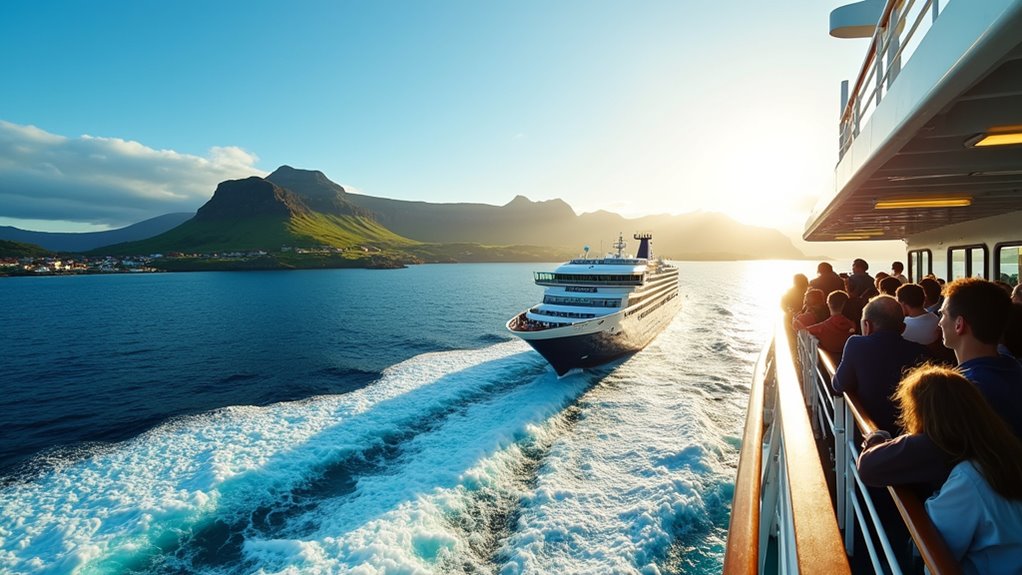
Azores island-hopping requires insider knowledge to avoid missing boats and flights—discover the secrets locals won't tell you.
Imagine planning your Azores adventure only to find yourself stranded on São Miguel while the boat to Pico departs without you because you didn’t book in advance. Island hopping across this stunning Portuguese archipelago requires strategic planning that many travelers overlook. You’ll need to navigate seasonal ferry schedules, understand flight connections between island groups, and balance cost versus convenience. Whether you’re dreaming of whale watching off Faial or hiking the volcanic landscapes of Flores, your inter-island transportation choices will shape your entire Azores experience.
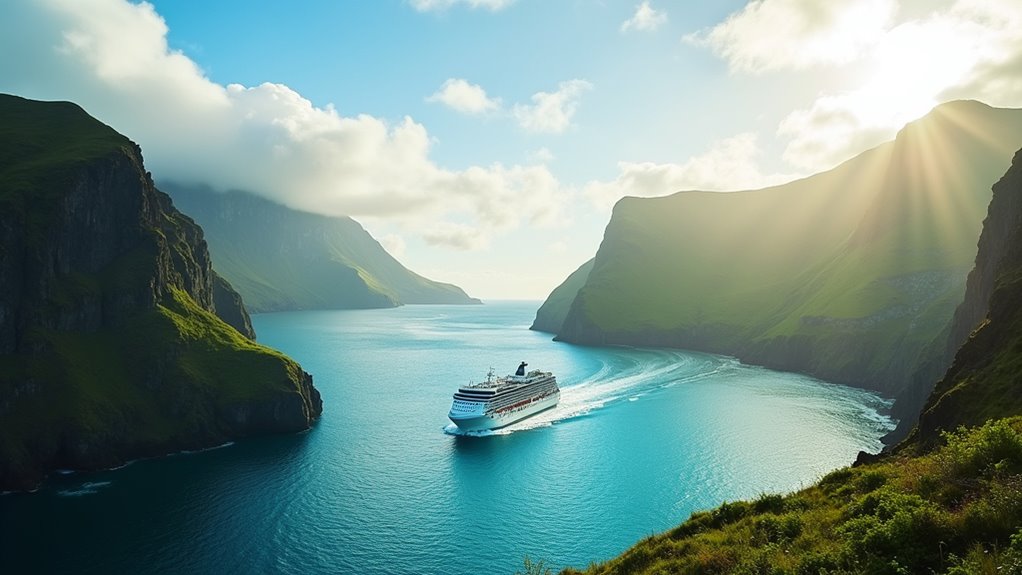
Located in the middle of the North Atlantic Ocean, the Azores archipelago is organized into three distinct island clusters: Eastern (São Miguel and Santa Maria), Central (Terceira, Graciosa, São Jorge, Pico, and Faial), and Western (Flores and Corvo). These islands, all formed through volcanic activity, sit across different tectonic plates—the Central and Eastern groups on the Azores Microplate, while the Western group occupies the North American Plate. The archipelago spans over 600 km across the Atlantic, creating significant distances between some islands.
When planning your trip, recognize each group’s unique character. The Central group contains the scenic “Triangle Islands” (Faial, Pico, and São Jorge) and UNESCO-listed Angra do Heroísmo. The Eastern group features São Miguel’s twin lakes, while the Western islands are designated UNESCO Biosphere Reserves. These diverse island groups offer a wide range of natural and cultural experiences for visitors.
This geographic arrangement directly impacts how you’ll travel between islands, with most inter-island connections limited to within groups.
When planning your island-hopping adventure through the Azores, you’ll quickly discover that Atlântico Line is your go-to ferry service provider. They operate several color-coded routes connecting the islands, with the Blue Line (Faial–Pico) running year-round with 30-minute crossings.
For summer travelers, you’ll enjoy expanded options like the White Line connecting all five central islands twice weekly, and the seasonal Purple Line adding Terceira to the mix. The western islands of Flores and Corvo connect via a brief 20-minute crossing. Schedules are typically published only 2-3 months in advance, so plan accordingly.
While pedestrians can often purchase walk-up tickets, vehicle reservations are mandatory. Book online to guarantee your spot, especially during peak season. Always arrive early, check for schedule changes, and pack essentials as onboard amenities are limited. The Algarve is renowned for its stunning beaches and charming towns, which can be easily incorporated into your Azores itinerary.
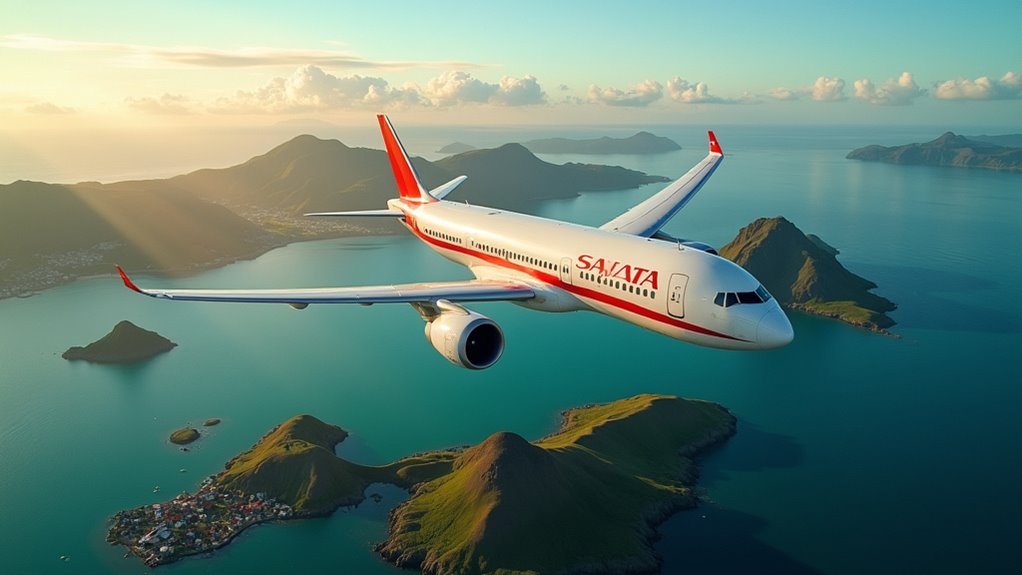
While ferry services offer a picturesque journey between islands, air travel provides a swift alternative for your Azores exploration. SATA Azores Airlines serves as the primary carrier connecting all nine islands, with flights typically lasting between 30 minutes and 1.5 hours.
For seamless island-hopping, SATA Azores Airlines connects all nine islands with quick flights, transforming your archipelago adventure.
As you plan your Azores adventure, understanding the archipelago’s seasonal patterns becomes essential for maximizing your island-hopping experience. While the maritime subtropical climate remains moderate year-round, timing can markedly impact your activities.
Summer (June-August) offers calmer seas and more frequent ferry services, ideal for water activities and island hopping, though crowds peak in July and August. Spring (April-May) provides perfect conditions for whale watching and hiking, while autumn showcases vibrant landscapes and migrating birds. The islands maintain a high humidity level of 70-80% throughout the year, which can make summers feel warmer and winters chillier than the actual temperature readings suggest.
For inter-island travel, flights operate consistently year-round, but ferry services reduce during winter months. Each island has its own microclimate—Santa Maria stays warmest from July through October, while Graciosa boasts fewer rainy days overall. Portugal is considered a safe destination for travelers, so you can explore the Azores with peace of mind.
Visit outside peak season for a more relaxed experience, and always pack layers regardless of when you travel.
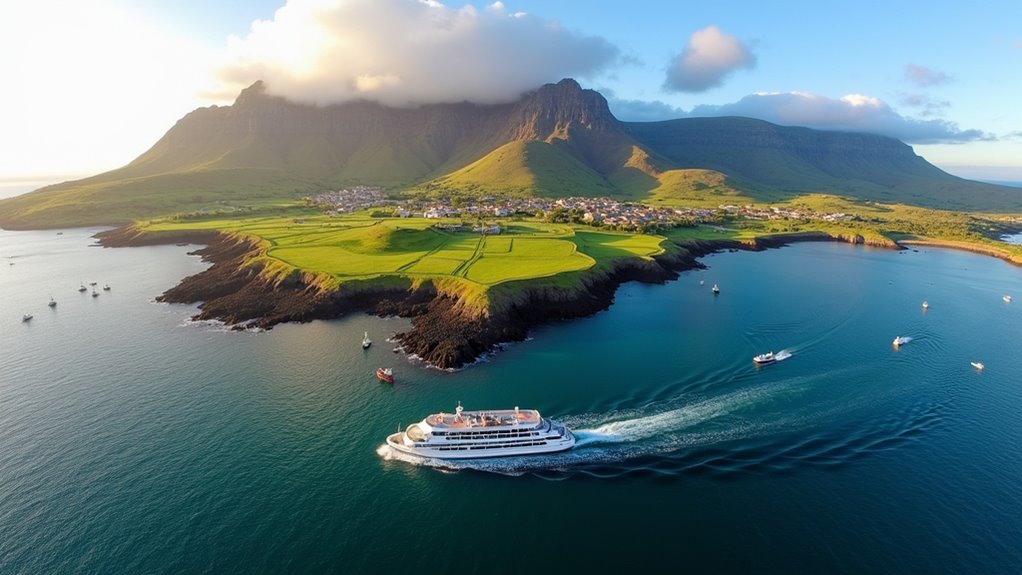
The Central Triangle of Faial, Pico, and São Jorge forms the beating heart of the Azores archipelago, offering travelers the most interconnected and accessible island-hopping experience. These volcanic islands boast stunning landscapes, from Pico Mountain to São Jorge’s dramatic fajas. The Central Triangle is part of the Central Group islands that also includes Terceira and Graciosa.
You’ll find multiple transportation options connecting these islands:
Book accommodations early, especially during summer months. While Portuguese is the primary language, you’ll find English widely spoken throughout the tourism sector. Ericeira Portugal is also a must-visit destination in the Azores.
Visiting the remote islands of the Azores requires more strategic planning than the central triangle, yet rewards travelers with untouched natural wonders and authentic cultural experiences.
For islands like Flores and Corvo, book your accommodations well in advance—options are limited, especially on Corvo with its few hundred inhabitants. Top hotels for hiking in Madeira can provide inspiration for comfortable stays on the Azores islands.
Allow 2-3 days per island, though São Miguel demands a week to explore properly. Weather conditions can change rapidly, sometimes experiencing all four seasons in a single day, particularly during winter months. The best time to visit is May through August when weather favors hiking and outdoor activities.
Inter-island flights are your most reliable transportation option, but check schedules early as they fill quickly.
Budget carefully for these remote adventures; flights cost more to outlying islands, and while restaurants may be fewer, you’ll enjoy authentic stays like Aldeia da Cuada on Flores that connect you directly to the islands’ natural beauty.
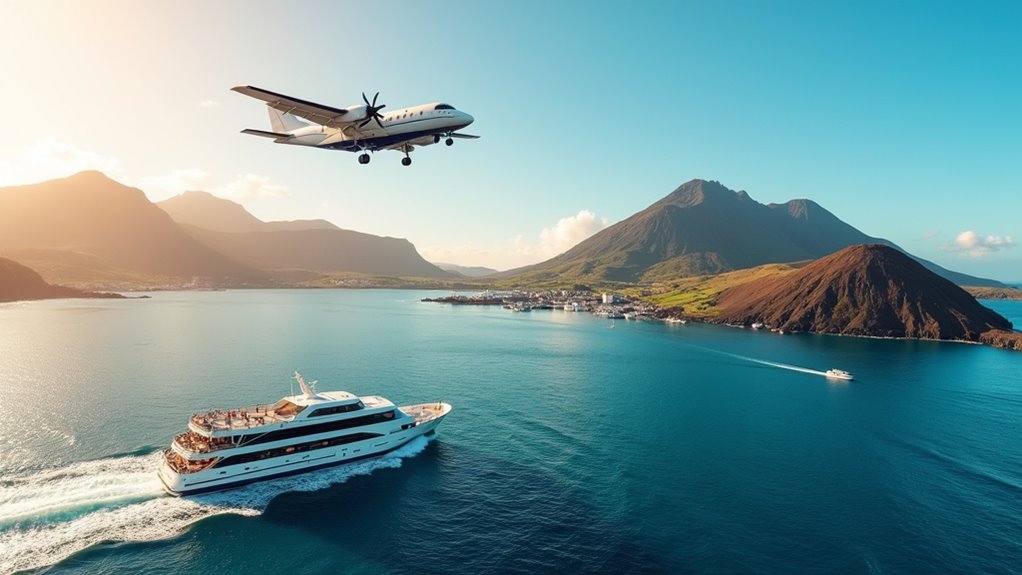
Choosing between the nine scattered islands of the Azores presents a consequential choice for travelers: speed or savings? Your decision impacts both budget and experience.
Flights offer quick 40-minute hops between islands but typically cost €50-150 one-way, while ferries save money (€10-25 for shorter routes) but demand more time. Family resorts in Alvor can provide an enjoyable stay for travelers with children.
Island-hopping dilemma: swift flights for €50-150 or budget-friendly ferries at €10-25 with extra hours to spare.
Consider these factors when deciding:
For travelers seeking to maximize their exploration opportunities while minimizing costs, the Azores Air Pass offers discounted island hopping for visitors planning to see multiple islands during their stay.
As you chart your course through these Atlantic jewels, you’ll find that island-hopping is half the adventure. Whether soaring like Icarus between volcanic peaks or sailing like Odysseus across azure waters, the perfect Azores journey combines flights and ferries with thoughtful planning. Book early, stay flexible, and you’ll open the archipelago’s full potential—a patchwork paradise that rewards travelers who navigate its rhythms with wonder and respect.